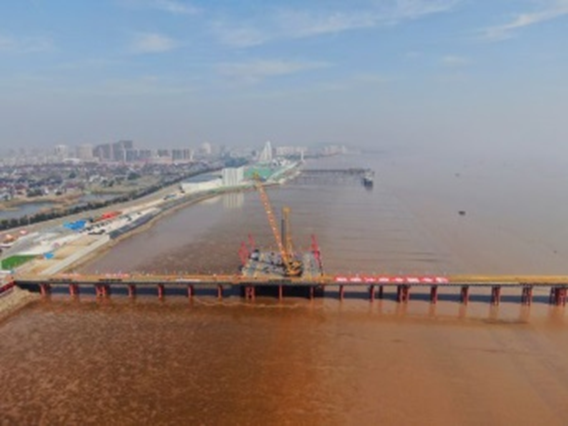On March 10, the first pile of the Hangzhou Bay Sea-Crossing Railway Bridge was drilled, marking the official start of the world's longest sea-crossing high-speed railway bridge offshore project.
Hangzhou Bay Sea-Crossing Railway Bridge is a control project of Tongsu-Jiayong High-Speed Railway, designed by CREC Bridge Institute and constructed by China Railway Major Bridge Engineering Group, with a design speed of 350 kilometers per hour and a total length of 29.2 kilometers. There are three channel bridges and approach bridges across embankments, sea, and shoals, which belong to the super-long high-speed railway bridge cluster project, of which the main span of the North Channel Bridge is 450 meters. It is the world's largest span ballastless track cable-stayed bridge. The main span of the middle channel bridge is 2 * 448 meters, the largest three-tower cable-stayed bridge with the ballastless track in the world.

Hangzhou Bay is one of the three most vital tidal bays in the world, which has the characteristics of a vast sea area, strong wind, rapid flow, and complex geological conditions. In addition, the bridge will cross the marine ecological red line area of the Qiantang River Estuary. The ecological and environmental protection requirements are incredibly high to protect the fish migration channel and bird resources. To solve the construction problems, China Railway Major Bridge Engineering Group has set up a particular scientific research team. The construction technology of large-diameter bored piles with a depth of 160 meters in the sea area of a strong tidal bore, the construction technology of embedded large-diameter super-long inclined steel piles in the sea area of the strong tidal bore and high flow rate, the rapid installation and removal technology of embedded bearing platform cofferdam in the sea areas of strong tidal bores and high flow rate, the prefabrication and erection technology of 80-meter prestressed concrete beams, and the safety risk monitoring technology for offshore construction. Eight projects have been tackled, such as the linear construction control technology of large-span ballastless track steel girder based on digital twins and the construction measurement technology of track fine adjustment. Overcoming these technical difficulties will not only solve the construction problems of large-span ballastless track bridges in complex environments but also provide experience for the construction of similar bridges in high-speed railways in the future.